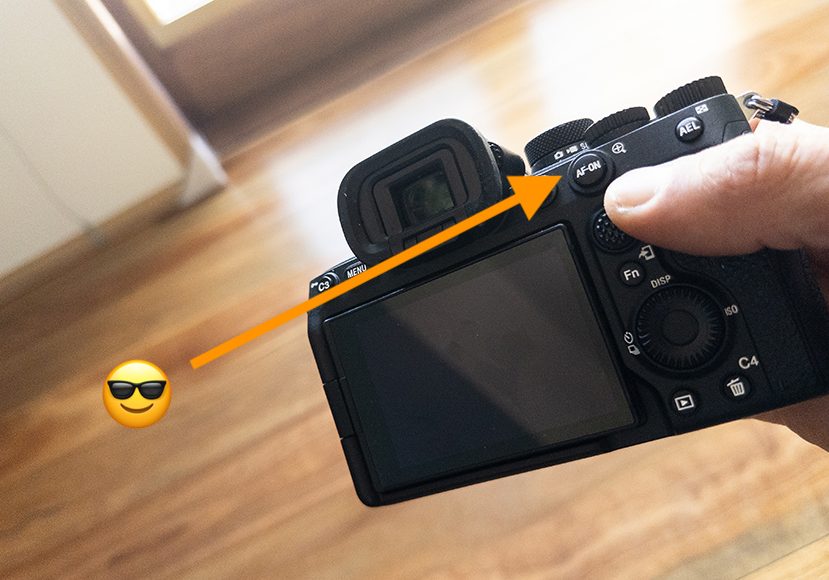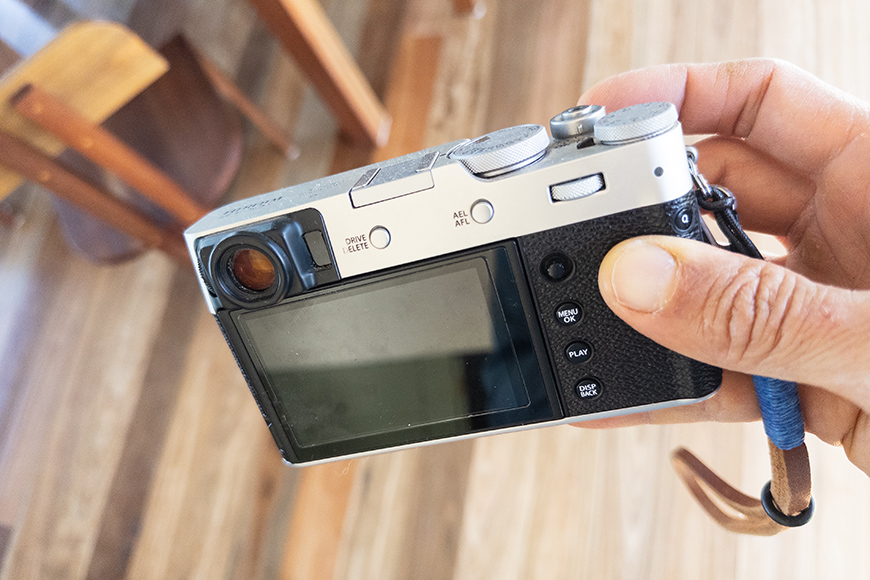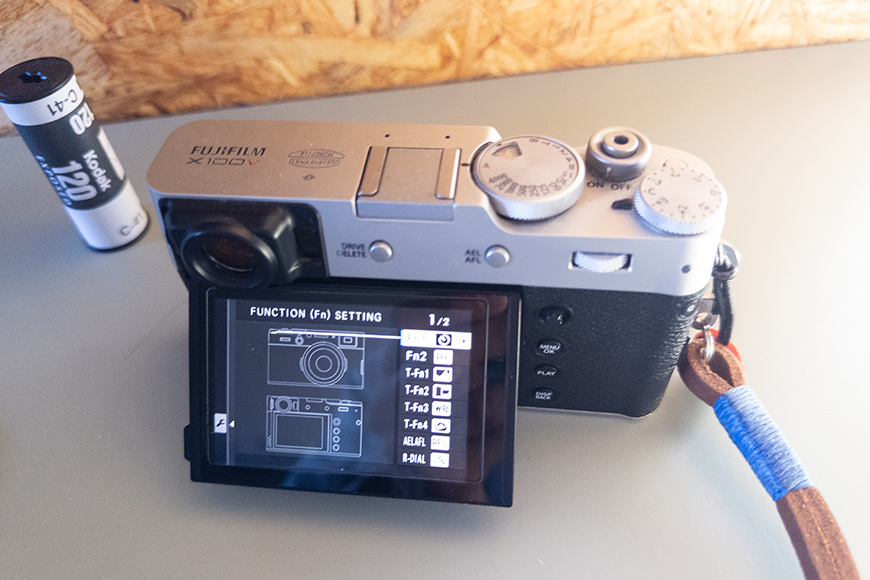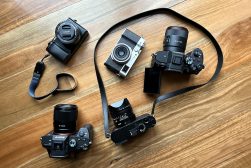
Back Button Focus: How to Use it Properly
Master the Back Button Focus technique with this comprehensive guide, covering its benefits, setup and common mistakes about this game-changing skill.
Learn | By Stephan Jukic
Shotkit may earn a commission on affiliate links. Learn more.
Changing your camera’s autofocus system to Back Button Focus may be the best thing you can do for your photography.
OK, that might be an exaggeration, but seriously – this is one technique you need to definitely need to try.
If your camera has an AF-ON button, you’re already halfway there.
If not, don’t worry, as I’ll show you how you can assign Back Button Focus in other ways, regardless of your camera model.
Ready to take control of your focus point? Let’s dive in.
What is Back Button Focus?
Back Button Focus is a technique in photography where the camera’s autofocus is activated by a separate button on the back of the camera, rather than the traditional half-press of the shutter release button.
In standard camera settings, the autofocus and shutter release are linked to the same button.
When you half-press the shutter button, the camera focuses, and when you fully press it, the camera takes the picture.
However, in certain situations, a photographer might want to focus and shoot at different moments. That’s where Back Button Focus comes in handy.
When you use Back Button Focus, you separate the actions of focusing and releasing the shutter. You can focus using the dedicated back button and then take the shot whenever you’re ready with the shutter release button.
This technique is particularly useful in dynamic shooting scenarios.
For example, in wildlife or sports photography, where the subject is moving rapidly, Back Button Focus allows photographers to pre-focus on a specific spot and then quickly take the picture when the subject is in the frame, without having to refocus.
It can also be useful in portrait or landscape photography when you want to lock focus on a particular area and recompose the shot.
Back Button Focus may take a bit of practice to get used to, especially if you’re accustomed to the traditional focus-and-shoot method, but many photographers find it to be a valuable tool in their arsenal once they’ve mastered it.
Does it Work with Manual Focus?
Back Button Focus can be seen as a sort of “hybrid” between autofocus and manual focus.
Much like in manual focus, you have control over when the camera focuses and when it does not.
However, you still benefit from the camera’s autofocus capabilities to achieve accurate focus quickly and easily.
This combination of control and convenience is one of the main reasons many photographers choose to use Back Button Focus.
In certain situations, you might switch between manual focus and Back Button Focus.
For example, in low light situations where the camera’s autofocus might struggle, you could switch to manual focus after initially setting the focus using Back Button Focus.
In macro photography, I like to use Back Button Focus to set an initial focus point and then fine-tune using manual focus.
How Much Do You REALLY Know About Photography?! 🤔
Test your photography knowledge with this quick quiz!
See how much you really know about photography...

Does it Work with Continuous Focus Mode?
Back Button Focus also works with continuous focus mode, often referred to as AI Servo on Canon cameras, AF-C on Nikon, Sony, and Fujifilm cameras, and AFC on Panasonic and Leica cameras.
In continuous focus mode, the camera continually adjusts the focus as long as the focus button is pressed, which is useful for tracking moving subjects.
By using Back Button Focus with continuous focus mode, you can start and stop the focus tracking at will, which gives you more control. This is particularly beneficial in sports or wildlife photography where the subject is often moving.
What are the Benefits and Drawbacks of Back Button Focusing?
PROS
- Greater Control Over Focus: Back Button Focusing gives you more control over when and where your camera focuses, allowing you to separate the act of focusing from the act of taking the photo.
- Faster Shooting in Dynamic Scenarios: Back Button Focusing is useful in situations where your subject is moving rapidly, such as in sports or wildlife photography. You can pre-focus on a particular area and shoot the moment your subject comes into the frame, without waiting for the camera to refocus.
- Avoids Accidental Refocusing: When you half-press the shutter button to meter and then recompose, there’s a chance you may accidentally refocus and ruin your shot. Back Button Focusing helps prevent this issue.
- Helpful in Certain Photography Genres: For street and landscape photography, where you might want to set your focus once and take multiple photos without refocusing each time, Back Button Focusing can be particularly helpful.
CONS
- Learning Curve: If you’re used to the default shutter focus, it might take some time to adjust to Back Button Focusing. It requires practice to become second nature.
- Can Confuse Other Users: If someone else uses your camera and they’re not familiar with Back Button Focusing, they may struggle to take photos.
- Not Always Ideal: In some situations, like casual point-and-shoot photography, the standard shutter focus might be simpler and more convenient.
- Varies by Camera: The process to enable Back Button Focusing can vary by camera brand and model, which can add an extra layer of complexity.
When Should I Use Back Button Focus?

Lucas Kepner
Based on my experience, I’ve found Back Button Focus to be useful in several shooting scenarios:
- Sports and Wildlife Photography: These types of photography often involve fast-moving subjects. With Back Button Focus, you can pre-focus on a spot where you anticipate the subject will be, and then immediately take the shot when the subject enters the frame without having to refocus.
- Portrait Photography: When shooting portraits, you often want to focus on the subject’s eyes and then recompose the shot without losing that focus. Back Button Focus makes this easy by separating the focusing and shutter release actions.
- Landscape Photography: Similar to portrait photography, in landscape photography, you often want to focus at a specific point (often using the rule of thirds) and then recompose the shot. Back Button Focus can be especially useful in this setting.
- Street Photography: In street photography, where quick reaction times are critical, you can use Back Button Focus to pre-focus at a certain distance and be ready to capture fleeting moments without any focus delay.
- Low Light Conditions: In low light situations, cameras often struggle to autofocus. With Back Button Focus, you can set your focus once and then take multiple shots without the camera hunting for focus each time.
- Macro Photography: When you’re shooting close-ups with a shallow depth of field, even a small shift in focus can impact your shot. Using Back Button Focus allows you to lock in focus and then carefully adjust your composition.
- Photographing through Obstructions: If you’re trying to photograph a subject through obstructions like a fence or window, your camera’s autofocus might lock onto the obstruction instead of the subject. With Back Button Focus, you can manually set the focus on your subject and avoid this issue.
My Real-World Experiences Using BBF
As a portrait photographer, I often use Back Button Focus to ensure my subject’s eyes remain sharp as I recompose my shot.
However, during a recent busy event shoot, I found myself switching back to shutter-button focus.
The reason? I was taking candid shots in a crowd, often reacting quickly to capture fleeting moments.
In these fast-paced situations, I found the standard shutter-button focus simpler and more intuitive.
With my focus and shutter release tied together, I was able to point, focus, and shoot quickly, capturing more spontaneous expressions.
How to Set Up Back Button Focus on Your Camera Model

Don’t worry if your camera doesn’t have an AF-ON button – you can still set it up.
The method for setting up back button focus varies across camera brands and models.
I’ve provided the instructions based on the most common cameras.
Some models or camera have a dedicated AF-ON button, while many do not.
If you’re lucky enough to have a dedicated AF-ON button, you’ll have no problem forgetting which button is assigned to the task!
Nikon Cameras
Models: D850, D810, D750, D610, D500, D7200, etc.
- Navigate to the “Custom Setting Menu.”
- Go to the “Controls” option.
- Choose “Assign AE-L/AF-L button.”
- Set it to “AF-ON.”
Canon Cameras
Models: EOS 5D Mark IV, EOS 6D Mark II, EOS 80D, etc.
- Go to the “Custom Controls” or “C.Fn” option in the menu (varies depending on model).
- Select the “Shutter Button” and set it to “Metering Start.”
- Select the “AF-ON” button and set it to “Metering and AF start.”
Sony Cameras
Models: A7IV, A7III, A7RIV, A6000, A6100, etc.
- Navigate to the menu and find the “Custom Key Settings.”
- Select the button you want to assign as your Back Button Focus (typically AF-ON or AEL).
- Assign this button to “AF-ON.”
Fujifilm Cameras
Models: X-T5, X-T3, X-T30, X-T4, X-Pro3, etc.
- Go to the “Button/Dial Setting” in the menu.
- Select “Function (Fn) Setting.”
- Choose the button you want to use for Back Button Focus (typically AE-L or AF-L).
- Set it to “AF-ON.”
Panasonic Cameras
Models: Lumix GH6,GH5, GH5 II, GH5S, S1, S1H, etc.
- Navigate to the “Custom Wrench” menu.
- Go to “Operation” and then to “Fn Button Set.”
- Select “Rec” and choose the button you want to use for Back Button Focus.
- Set it to “AF-ON.”
Leica Camers
Models: M11, M10, Q3, Q2, SL2, etc.
- Go to the “Set” menu.
- Navigate to “User Profile” and select “Controls.”
- Choose the button you want to use for Back Button Focus (usually the up button on the wheel).
- Set it to “AF-ON.”
Olympus Cameras
Models: OM-D E-M1 Mark II, OM-D E-M1X, OM-D E-M5 Mark III, etc.
- Navigate to the “Custom Menu” (gear icon).
- Scroll down to the “B” option for “Button/Dial/Lever.”
- Find the “AEL/AFL” settings and select the option “S-AF.”
- Set this option to “Mode 3” (this disables the half-press autofocus on the shutter button).
- Go back to the “AEL/AFL” settings and select the option “C-AF” and “MF.”
- Set both of these to “Mode 4” (this sets the AEL/AFL button to autofocus).
- Exit the menu and now your camera is set up for back button focusing.
iPhone
The standard iPhone camera app doesn’t offer a specific Back Button Focus feature equivalent to that found on DSLRs or mirrorless cameras.
However, the iPhone does have a “lock focus” feature that can serve a similar function. Here’s how you can use it:
- Open your iPhone’s Camera app.
- Compose your image in the viewfinder.
- Tap the screen where you want to set the focus.
- Press and hold on the screen until you see “AE/AF Lock” appear at the top.
Now, even if you move your phone, the focus and exposure will remain locked on that spot, much like when using Back Button Focus on a traditional camera. To unlock the focus and exposure, just tap anywhere on the screen.
Remember to also turn off the autofocus from the shutter button for all these setups.
Common Back Button Focusing Mistakes and How to Avoid Them

You can configure Back Button Focus on almost all digital cameras.
Using Back Button Focus can significantly enhance your control over focusing, but it can also introduce a few pitfalls if not used correctly.
Here are some common mistakes photographers make when using BBF, and how you can avoid them:
1. Forgetting to Focus: Since Back Button Focus separates the focusing action from the shutter release, it’s easy to forget to press the focus button, especially when you first start using it. Always remember to focus before you shoot.
Pro Tip: Practice! The more you use Back Button Focus, the more it will become second nature. Regularly remind yourself to focus before shooting until it becomes a habit.
2. Accidental Refocusing: If you’re using Back Button Focus to lock focus and recompose, you might accidentally press the focus button again, causing the camera to refocus.
Pro Tip: Be conscious of your button press. Once you’ve focused, take your thumb off the focus button to avoid refocusing.
3. Switching Back to Shutter Button Focusing Unintentionally: If someone else uses your camera or you’re switching between multiple cameras, you might accidentally end up using a camera set to shutter button focusing.
Pro Tip: Keep a mental note of the focus setting on each of your cameras, and make sure to inform anyone who uses your camera about the Back Button Focus setup. If you have a dedicated AF-ON button on your camera, you’ll have no problem forgetting which button is used for it BBF.
4. Not Using Continuous Focus when Needed: Back Button Focus can be highly effective with continuous focus for moving subjects. If you use single focus, you might get blurry images.
Pro Tip: Be aware of the focus mode you’re in and switch to continuous focus (AF-C or AI Servo) for moving subjects.
5. Struggling in Low Light: Autofocus can sometimes struggle in low light, even when using Back Button Focus.
Pro Tip: Use manual focus or assistive tools like focus peaking in difficult lighting situations.
FAQs
Can Back Button Focus be used with continuous focus mode?
Yes, Back Button Focus can be very effective when used with continuous focus mode, particularly when shooting moving subjects.
Does Back Button Focus replace manual focus?
No, Back Button Focus does not replace manual focus. While it gives you more control over your autofocus, manual focus is still needed in situations where autofocus might struggle, such as in low light or with certain types of subject matter.
Is back button focus faster?
Back Button Focus itself isn’t faster, but it can help streamline your shooting process by giving you greater control over when and where your camera focuses, potentially reducing the number of missed or out-of-focus shots.

Check out these 8 essential tools to help you succeed as a professional photographer.
Includes limited-time discounts.













